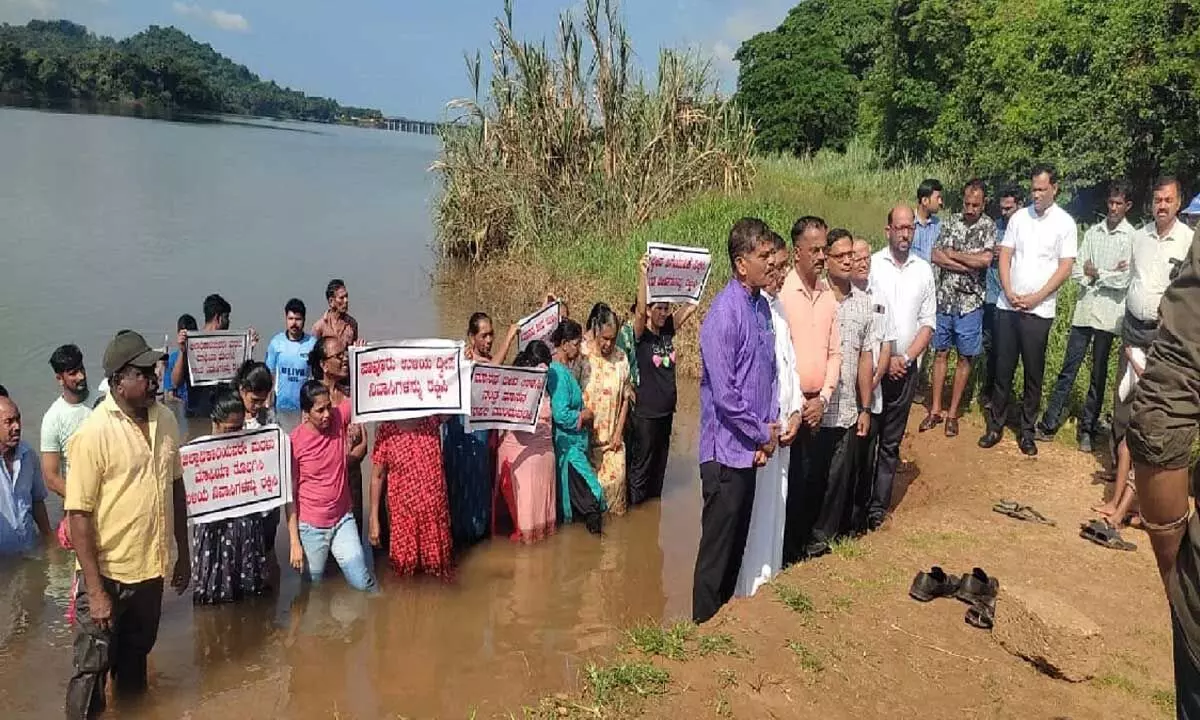Live
- India turning into world’s Deep Tech Hub as reforms reverse brain drain: Hardeep Singh Puri
- Two killed in separate bomb blasts in Pakistan
- Woman postmaster refuses to bribe senior, gets him booked by CBI
- Three killed in violence over mosque survey in UP’s Sambhal
- One killed, four injured in hand grenade explosion in southern Croatia
- IPL 2024 Auctions: Heartening to see almost every team showing interest in Yuzi, says childhood friend Piyush
- 15 killed, 20 injured in alleged paramilitary attack in Sudan
- Drugs valued at Rs 16 cr seized in Tripura
- Manipur violence: Assam Police mount 24x7 vigil along inter-state border
- The Impact of Wellness Programs on Employee Engagement and Retention
Just In
Sand Mafia Threatens Uliya Island as Officials Allegedly Turn a Blind Eye


Growing concerns over illegal sand mining in Karnataka's coastal districts have prompted environmentalists to sound the alarm. A formal complaint has been lodged with the state government, accusing district officials of collusion with the sand mafia operating in Uliya Island near Mangalore.
Mangaluru: Growing concerns over illegal sand mining in Karnataka's coastal districts have prompted environmentalists to sound the alarm. A formal complaint has been lodged with the state government, accusing district officials of collusion with the sand mafia operating in Uliya Island near Mangalore. The complaint, filed by environmentalist Alvin Mendonsa, urges swift action against the officials involved.
Dakshina Kannada, home to key rivers like the Netravati, Kumaradhara, Phalguni, and Nandini, is facing an environmental crisis. Rampant illegal sand mining, particularly in the Netravati River, is threatening these vital water sources. Despite extensive media coverage, authorities have been largely unresponsive, sparking public outrage. Locals fear that Uliy Island, nestled in the Netravati River near Pavur in Ullala Taluk, is on the brink of ecological collapse due to unchecked mining.
In his complaint, Mendonsa highlighted the failure of police and government officials to take action, despite multiple reports and protests. “The sand mafia operates with impunity, aided by corrupt officials and politicians,” Mendonsa said. Residents have accused local police of tipping off sand smugglers instead of halting the illegal operations. Many locals claim that the mafia threatens them with political connections.
Amid increasing tensions, residents of the island and neighboring areas have been staging protests, demanding an end to illegal sand mining. Demonstrations outside Mangalore’s Mini Vidhana Soudha have drawn attention to the issue, but so far, their pleas have fallen on deaf ears. “The island is being destroyed, and homes in nearby areas like Ranipur Suri and Ullala Hoige are at risk,” warned one protester.
Illegal sand mining is not limited to the Netravati River. Other rivers in the district, such as Phalguni, Kumaradhara, and Nandini, are also affected. Despite the issuance of permits for sand extraction, illegal operations continue, with smugglers exploiting loopholes in outdated permits. Mendonsa's complaint points out that, although the district’s previous collectors attempted to clamp down on illegal mining, the current administration has taken little action.
Local officials have issued permits allowing sand to be cleared from areas that obstruct fishing and the passage of large boats. However, critics argue that the need for such clearances is exaggerated, and illegal operations are thriving in the guise of permitted activities. With licenses granted for the extraction of over 655,000 metric tons of sand across 27 locations between 2023 and 2025, illegal mining persists in hundreds of other locations.
The environmental consequences are severe. Over-extraction of sand has not only damaged aquatic ecosystems but has also led to a sharp decline in the water table, worsening drinking water shortages. Bridges have also sustained damage due to altered river flow patterns. Suspicions abound that illegal traffickers have defrauded the state of crores in royalties, as sand mining regulations outlined by both central and state governments are widely ignored.
Mendonsa's complaint calls for a total ban on sand mining in Dakshina Kannada, urging the government to hold officials accountable for enabling the sand mafia. He has also raised concerns about the lack of oversight from monitoring committees responsible for regulating sand mining activities.

© 2024 Hyderabad Media House Limited/The Hans India. All rights reserved. Powered by hocalwire.com






